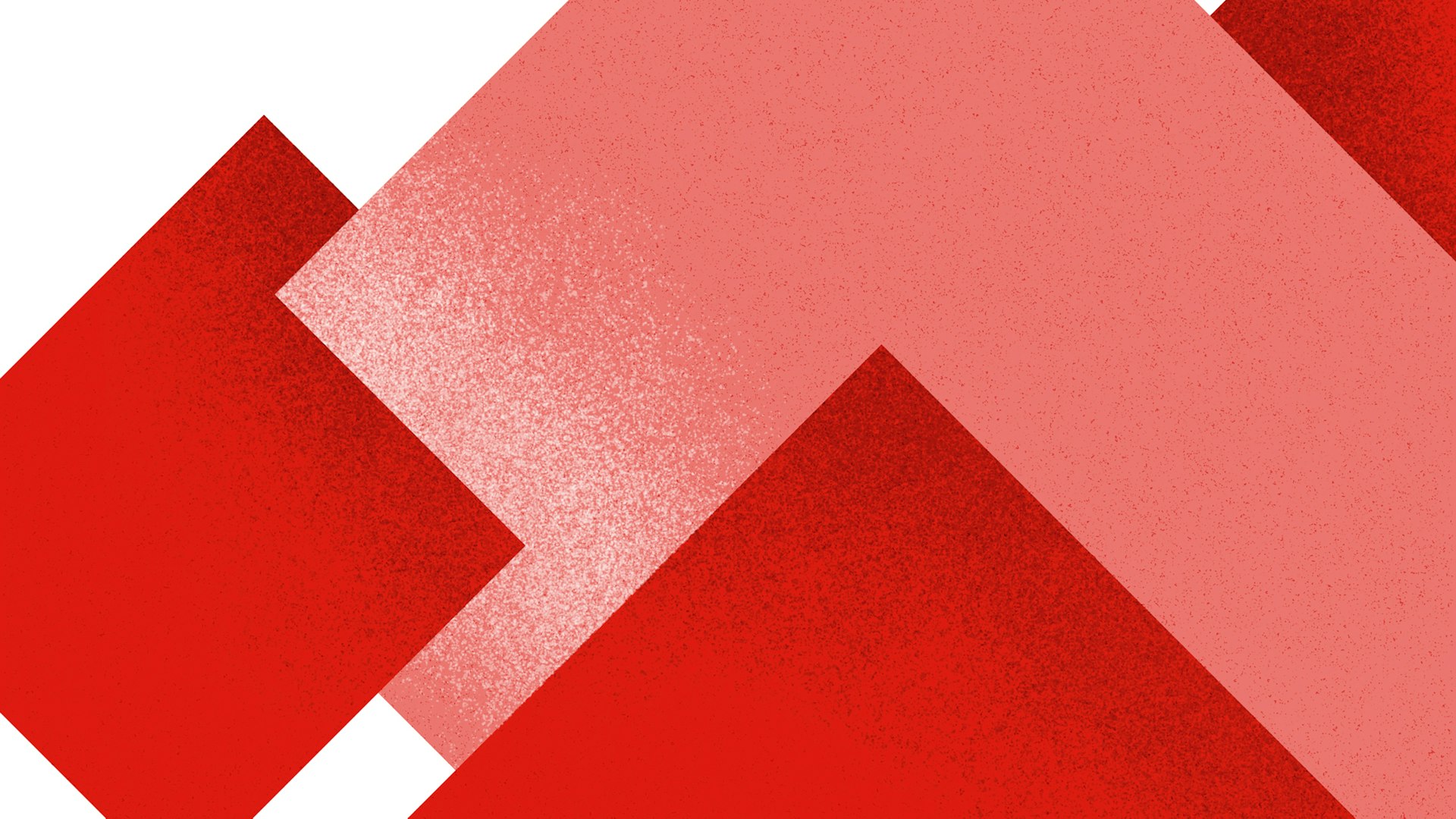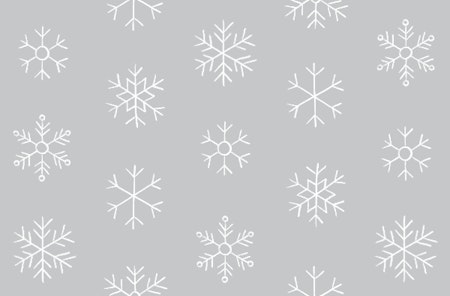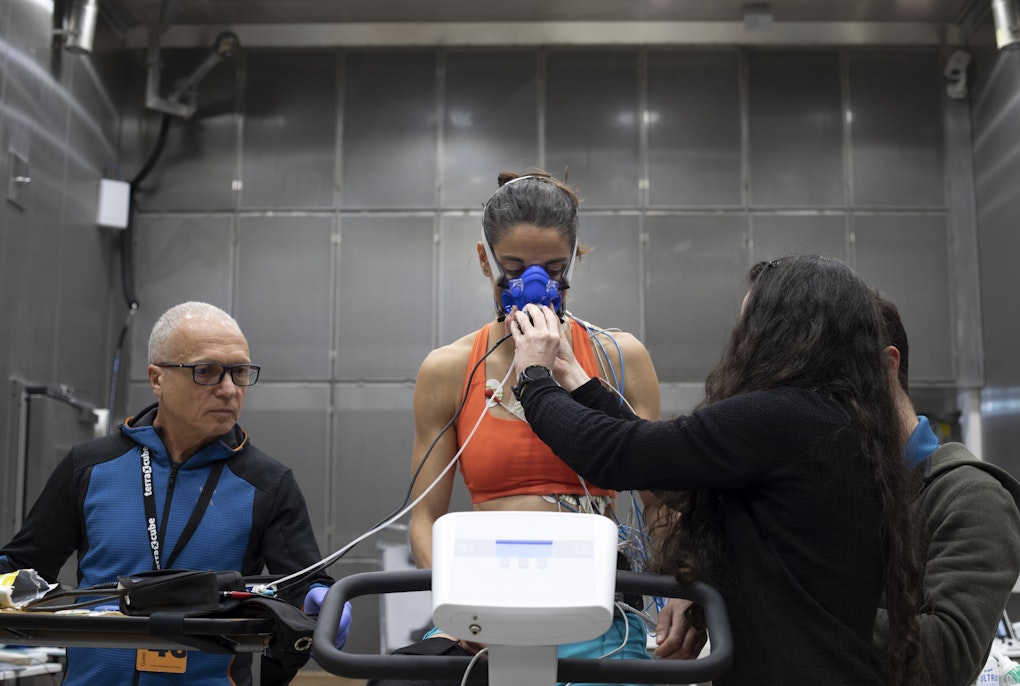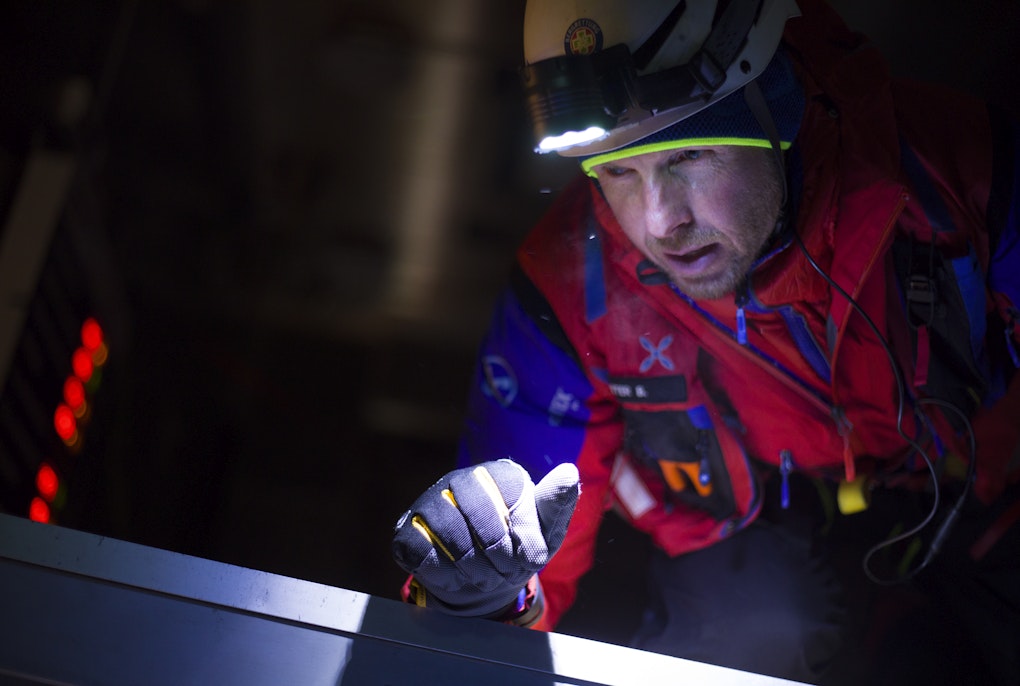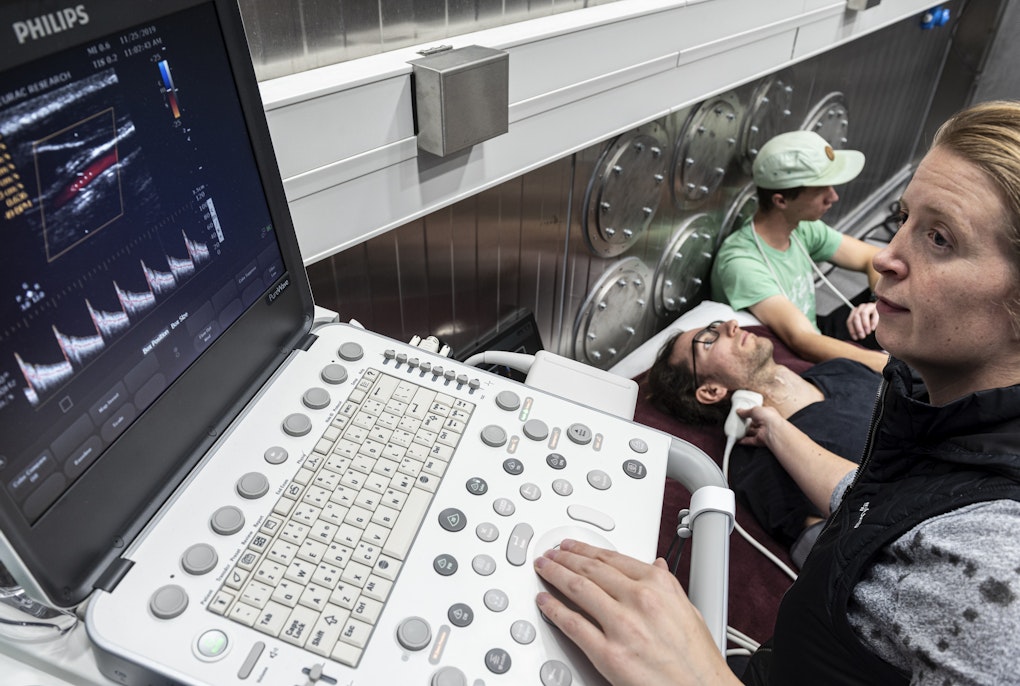magazine_ Interview
“Data sustainability is the new frontier of research”
Conversations between disciplines: interview with physicist Claudia Notarnicola and emergency physician Giacomo Strapazzon.
A physicist with expertise in remote sensing and Earth observation and an emergency physician active in mountain rescue. Claudia Notarnicola and Giacomo Strapazzon could not have more different profiles, yet their research is united by at least two things: the use of increasingly bigger data and ... snow.
How and when did snow come into your life?
Giacomo Strapazzon: It’s always been there. First in my free time, especially because of ski mountaineering, and then in my work. As a rescuer, I was first interested in avalanche victim recovery techniques, then I focused on medical issues such as hypothermia.
Claudia Notarnicola: For me it was definitely not an early encounter because I don’t come from a mountainous area (laughs. Notarnicola grew up in Puglia, Ed.). Professionally, I was involved in water before I landed in snow. It was at Gavazzi Space (now Compagnia generale per lo spazio – the General Company for Space), in Milan that I became acquainted with snow and later, here in Bolzano I found the ideal terrain to apply my knowledge. At first, there were so many competitors. But we persevered and it was worth it.
What have you been investigating recently that is particularly close to your heart?
Notarnicola: A review of snow cover in mountain areas around the world over the past 38 years was recently published in the Nature journal’s Scientific Reports. Using a hybrid approach, I combined time series of satellite data and mathematical models and reconstructed how between 1982 and 2020, the period of snow cover decreased by an average of about 15 days in a year.
Strapazzon: Research that combines medical science with nivology strongly resonates with me. Recently we revealed how a victim completely buried by an avalanche can take advantage of the air in the snow to breathe. The more powdery the snow, the greater the chance of being able to access the air, if the snow is wetter, it’s the opposite. This has allowed us to improve equipment and self-rescue guidelines.
Notarnicola: We also study snow density. I wish our research strands converge one day.
Well, what’s stopping you?
Notarnicola: Certainly not the willingness to team up! The importance of us knowing as much about snow is undeniable. The more we understand about the consistency of snow, along with other parameters, will allow us to better calculate the water equivalent and consequently gauge the water resources that will be available to us in future scenarios. This is the holy grail of remote sensing. However, although we have more and more data available, there are unfortunately still so many technical problems that need to be solved.
Where does the data for your studies come from?
Notarnicola: There are networks of data on the ground, measurement campaigns and climate stations as well as satellite data and mathematical models that are indispensable for filling “holes” such as those that can arise in time series. In addition to these sources are so-called “auxiliary indications” ̶ historical reports or other documents from which we can extrapolate useful information.
Strapazzon: In our case we have on the one hand, clinical data collected during experiments of various kinds, from tests in facilities such as the terraXcube or field monitoring; on the other, we have data from actual accidents. In the latter case, the challenge is to combine data collected during rescue with hospital data and data concerning the environment, such as snow characteristics. For this purpose, at Eurac Research we host various registers, such as one for avalanches or alpine trauma which keep track of accidents.
“When I was preparing my thesis in the mid-1990s, I had three images, for my last study on global snow cover trends, I used at least 7,000 satellite images. Does that give you an idea?”
Claudia Notarnicola
You both talk about time series. How much has data grown over time and how has that affected your work?
Notarnicola: When I was preparing my thesis in the mid-1990s, I had three images which had been acquired from a NASA Space Shuttle mission. For my last study on global snow cover trends, I used at least 7,000 satellite images. Does that give you an idea? This acceleration has changed the work profoundly: no one can download and save that much data locally, and we are also all dependent on platforms that pre-process the data.
Strapazzon: In absolute terms, our numbers are not great because fortunately the number of victims is quite stable ̶ there are about 150 avalanche deaths across the Alps each year. With new tools, however, we can do more and more measurements in a shorter amount of time. Years ago, rescuers measured a person’s parameters and wrote them down by hand on a sheet of paper; today a monitoring instrument can collect as many as 7,000 measurements in an hour. We, too, are gearing up to save data in an efficient and standardized way.
In his book report “Digital Hell,” (L’enfer numérique) journalist Guillaume Pitron shows how the cloud world, which we perceive as immaterial, actually has very material implications, especially in terms of its ecological footprint. According to his calculations, the Internet is responsible for about 4 per cent of global emissions and given that an estimated 45 times the data produced in 2020 will be produced in 2035, the impact is set to explode. Is the environmental sustainability of data an issue openly discussed in your projects?
Notarnicola: It’s the new frontier of research. So far there has been a race for data, and this has allowed us to make great strides: for example, artificial intelligence methods began their development in the 1980s and 1990s but have only seen their full use in recent years. This is all precisely because of the big data boom. Today we have realized that data is not cost-free, so increasingly we have to ask ourselves which data is really essential. In fact, before we launch a satellite, we have to think hard about what images we absolutely need it to send.
“At the moment, in fact, reusable instruments are still too heavy to be used easily for relief in remote areas.”
Giacomo Strapazzon
Does research in your disciplines produce waste?
Notarnicola: As far as data is concerned, time series are always useful. And in the area of remote sensing, beyond data that may be parked for a long time in some cloud, a big issue is space debris, that is, decommissioned satellites that become junk. Also given the increasing number of satellites from private companies this will be a big issue not only for hyperspace, but also for real space.
Strapazzon: In our discipline we are always trying to reduce the single-use materials, but it is complicated to find the right trade-off between sustainability, safety of staff and patients, and weight of equipment. At the moment, in fact, reusable instruments are still too heavy to be used easily for relief in remote areas.
Let’s talk about the social sustainability of data. How do we navigate this proliferation of information?
Strapazzon: You have to stay focused on the primary research question and not get lost in the secondary data. In international clinical trials, there is a tendency to set a minimum for indispensable data: it’s the only way to be sure that everyone is collecting it in full. The broader the request, the greater the risk of inaccuracy.
Are there any human elements that artificial intelligence could never replace?
Notarnicola: Creativity in devising a study and interpreting the results, including having to make interdisciplinary connections.
Strapazzon: The same is true in emergency medicine. Collaboration and a deep interpretation of data are essential and are also values that could be at risk if we don’t pass them on to those who are starting out on this profession and who tend to rely more on automatic interpretation. Let me give you an example: for years my team has been working closely with a very good statistician to study avalanche victims; over time, and just by reasoning together, we have learned that it happens that some even very statistically significant data is actually almost irrelevant from a clinical point of view. So that we don’t get blindsided, we constantly have to stop and look at the numbers together.
Notarnicola: Maybe in a few years we will be proven wrong, but for now this is a system of intelligence that has not been equaled. And, I have doubts that it ever will be ...
Claudia Notarnicola
Claudia Notarnicola is a physicist and the director of the Institute for Earth Observation at Eurac Research. She has held teaching positions at the universities of Bari and Bolzano and at the Argentine Space Agency. Since 2006 she has been part of the Cassini Radar Science Team analyzing the surface of Titan, Saturn’s largest moon. She studies snow, but loves the sea, which she frequents as often as she can.
Giacomo Strapazzon
Giacomo Strapazzon is an emergency physician and rescuer as well as the director of the Institute for Mountain Emergency Medicine at Eurac Research. This summer he won a research award from the Wilderness Medical Society. In his spare time, his desire to go to the mountains has not diminished because of his occupation, and it’s a safe bet that as soon as she’s old enough, he will teach his little daughter Delia to ski.
